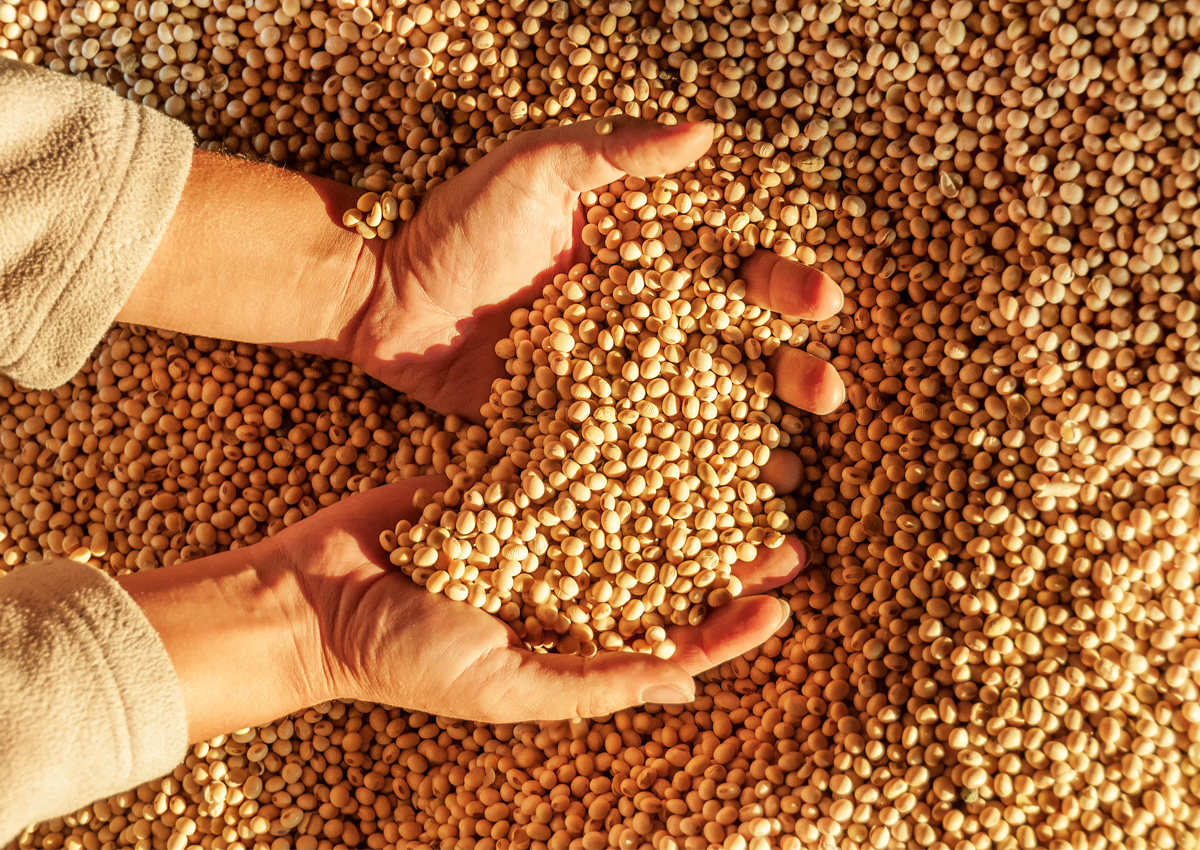
Researchers Identify Gene Important in Soybean Protein Content
February 16, 2022| |
Among all other legumes, soybeans are protein powerhouses, providing a key protein source for humans and livestock around the world. Now, after 30 years, scientists at the University of Illinois have identified a gene with the largest impact on seed protein in soybeans.
In 1992, then-graduate student Brian Diers published the first seed protein map for soybeans and identified the region of the genome where the gene might be located. Three decades and many technological advances later, the publication of two soybean genomes nail down Glyma.20G85100, a gene without a known function but closely related to "clock and circadian timing" genes.
Like most genes, Glyma.20G85100 comes in multiple forms or alleles. Depending on the allele found in a particular soybean line, seed protein content can be high or low. And, as it turns out, most commercial soybean lines contain the low-protein allele. According to Diers, the high-protein allele has a deleterious effect on yield so elite varieties bred for high yield generally have the low-protein form. The team hoped that the gene would be involved in nitrogen fixation or nitrogen metabolism, but the gene appears to be part of the soybean plant's circadian machinery.
Matt Hudson, co-author of the study said, "It could be that the gene is involved in moving photosynthesis products into the seed or it could be some completely unrelated pathway. It's weird, and we really don't know."
For more details, read the article in ACES News.
| |
You might also like:
- Scientists Boost Recombinant Protein Production in Soybean Seeds
- CRISPR-Cas9 Used in Mutagenesis of Soybean Seed Storage Protein Genes
- Fat Content in Soybean Oil Modified with CRISPR-Cpf1
Biotech Updates is a weekly newsletter of ISAAA, a not-for-profit organization. It is distributed for free to over 22,000 subscribers worldwide to inform them about the key developments in biosciences, especially in biotechnology. Your support will help us in our mission to feed the world with knowledge. You can help by donating as little as $10.
-
See more articles:
-
News from Around the World
- Svalbard Global Seed Vault Receives More Than 20,000 Seeds for 2022's First Deposit
- Experts Highlight the Importance of GM Technology in Sub-Saharan Africa
- Researchers Identify Gene Important in Soybean Protein Content
- Australia's OGTR Invites Public Comments on Proposal to Include GM Canola on GMO Register
- Japan's Food Safety and Security Expert Says GM and Genome-Edited Crops Safer than Conventional Varieties
-
Research Highlights
- Scientists Develop Yellow-colored African Violets
- GM Soybean Shows Enhanced Resistance to Soybean Cyst Nematode
-
Plant
- Chinese Scientists Elated at Approval of Gene-edited Crops
- CRISPR Cherry Tomato Shows Resistance to Pepper Veinal Mottle Virus
- Scientists Use Prime Editing in Potato and Moss
- Nigeria Releases National Guidelines on Gene Editing
- Scientists Develop Genome-Edited Powdery Mildew Resistant Wheat Without Growth Penalties
-
Read the latest: - Biotech Updates (December 17, 2025)
- Gene Editing Supplement (December 17, 2025)
- Gene Drive Supplement (February 22, 2023)
-
Subscribe to BU: - Share
- Tweet

